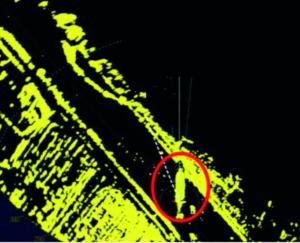202425: Vessel speed exacerbates bank suction, take two
A 274m long tanker was making way in a canal under pilotage at about nine knots (slow ahead). As the passage progressed, the pilot conned the vessel closer to the port side of the canal in order to pass some anchored vessels to starboard.
The pilot requested the helmsman to steer a course of 000 degrees, which he was able to do, but with some difficulty. In order to maintain the required course he was applying 20 to 30 degrees port helm. This was a strong indicator of bank suction aft. It does not appear that the bridge team were aware of the situation.
At one point, the pilot requested a course change to 002 degrees. The helmsman complied by easing the helm to midships for a brief instant. As soon as this was done the vessel took a strong shear to starboard; the helmsman rapidly applied 30 degrees of port helm in an attempt to stop the swing but this had no effect. The pilot ordered full astern, which slowed the vessel, but it continued to swing to starboard despite this and came crosswise in the canal before stopping.

Lessons learned
This is an almost identical incident to that of MARS202413. A vessel in a restricted waterway is experiencing bank suction aft due to being too close to the bank at a speed that is too high for the circumstances – even though it is only nine knots. The helmsman is using extreme helm to hold the desired course but as soon as this helm is eased or put to midships, the vessel swings inexorably to the opposite bank.
- Keen situational awareness and good communication are key to avoiding this situation. If extreme helm is required to hold the vessel steady in a restricted waterway, speed must be reduced as soon as possible before removing the helm. In other words, the pilot and OOW should be keeping an eye on the helm applications to better judge the strength of bank effect on the vessel.
- If the pilot and OOW are otherwise occupied, the helmsman should warn the pilot and OOW of the extreme helm application.
